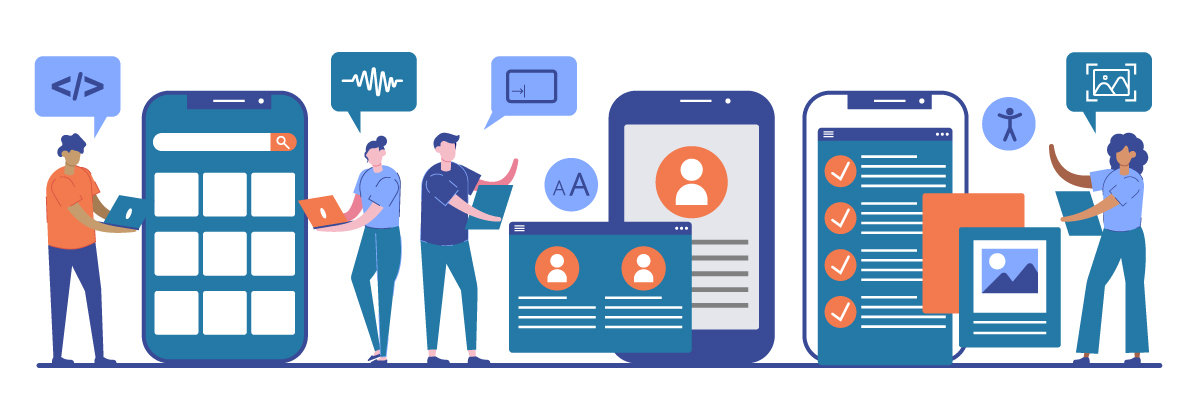
The development world does love its acronyms, doesn’t it! We can’t help but think of some of the ones with the most longevity, like WYSIWYG: What You See Is What You Get, and an editor that displays what you see on the screen is exactly what you see when you print the document; SMACSS: Scalable and Modular Architecture for CSS, and a style guide based in five categories (base, layout, module, state, theme); and YAGNI: You Ain’t Gonna Need It, and the principle of XP that establishes that a programmer should not add functionality until deemed necessary.
While those veer more toward the lighthearted, there are those grounded in the more serious (and definitely not part of the YAGNI philosophy). Notably, Web Content Accessibility Guidelines, or WCAG, for short.
Created by the World Wide Web Consortium (W3C), in a nutshell, WCAG sets out to allow people living with disabilities to more comfortably use and enjoy the web. It does so by providing a single shared standard for web content accessibility that meets the needs of individuals, organizations, and governments internationally.
Interestingly, many governments and healthcare organizations are bound by law to adhere to these standards, yet private businesses, for the most part, aren’t required to be WCAG compliant (at the moment).
However, for those in eCommerce, adhering to this standard allows them to be certain their website, and thus their products and services, are accessible to the widest possible audience.
Enter WCAG.

It is considered to be the benchmark for website accessibility, and following its guidelines is the best and easiest way of making your eCommerce website usable for all customers. And though the principals are much more complicated than “cosmetics,” like simply paying attention to color, contrast, font size, etc., the guidelines dive deep into mechanics and involve making interactions:
- Perceivable: Users must be able to perceive it in some way, using one or more of their senses.
- Operable: Users must be able to control UI elements (e.g. buttons must be clickable in some way — mouse, keyboard, voice command, etc.).
- Understandable: The content must be understandable to its users.
- Robust: The content must be developed using well-adopted web standards that will work across different browsers, now and in the future.
There are millions of users who struggle with accessing the internet. When sites are properly designed, developed, and maintained, it gives all users equal access to information and capabilities, and precisely why WCAG guidelines were introduced and the starting point for worldwide accessibility and inclusion.
Business owners already know how important it is to understand what their customers want. However, knowing what they need is often overlooked.
Whether through a complete redesign, simply updating, or utilizing accessibility software like AccessiBe, Brand Labs is very “WCAG aware” and can prepare you with the necessary changes so you stay in touch with today’s users by empowering those who struggle with the everyday and leveling the interaction playing field.
Everyone wins.
Is your site WCAG compliant? Need it to be? Brand Labs is here. Contact us today to learn how we can up your eCommerce game, giving you even more of an edge in today’s nuanced and competitive landscape.